Meta description: Discover Cristiano Ronaldo’s multifaceted role in football. From winger to forward, explore his positional evolution and goal-scoring prowess. Learn more at CAUHOI2025.UK.COM! Key terms: football positions, attacking roles, player development.
1. Early Years: The Traditional Winger
Cristiano Ronaldo started his professional football journey as a traditional winger. In this role, primarily deployed on the right side of the field, his main task was to use his speed and dribbling skills to take on defenders and create opportunities for the team’s striker. Think of it as a classic setup, with wingers providing the ammunition for the main goal-scorer.
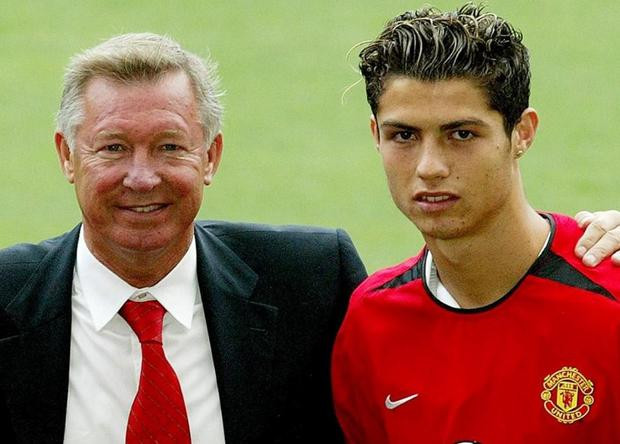 Sir Alex Ferguson with a young Cristiano Ronaldo
Sir Alex Ferguson with a young Cristiano Ronaldo
Sir Alex Ferguson mentoring a young Cristiano Ronaldo at Manchester United
Manchester United: Nurturing a Young Talent
When Ronaldo joined Manchester United in the 2003/04 season, he usually occupied the right flank in a 4-5-1 formation. His primary job, alongside players like Ryan Giggs on the opposite wing, was to supply the central striker, Ruud van Nistelrooy, with scoring chances. Van Nistelrooy was a master finisher, but his involvement in build-up play was limited.
Limitations and Long Shots
With van Nistelrooy as the focal point of the attack, Ronaldo’s goal-scoring opportunities were often limited to long shots and set-pieces. As evidenced by his debut Premier League season, where of his 6 goals, 3 were from outside the box and 2 were headers. His role revolved around beating defenders on the wing and feeding RVN, which seemed a perfect fit given his pace and skill.
2. The “Showman” Reputation and Transformation
In his initial seasons in England, Ronaldo developed a reputation as a showman. He was often perceived as overdoing step-overs, holding onto the ball for too long, and exaggerating fouls. This sometimes frustrated his teammates, as Rio Ferdinand pointed out: “We all saw his huge potential. When he came here, his first thought was to entertain… we were kicking it out of him, the entertainment factor, to get goals and assists.”
 Cristiano Ronaldo and Ruud van Nistelrooy
Cristiano Ronaldo and Ruud van Nistelrooy
Cristiano Ronaldo’s primary responsibility was to create chances for Ruud van Nistelrooy
Goal Progression and Supporting Role
Ronaldo’s goal tally increased over his first few seasons, from 6 to 9, then to 12 in all competitions in 2005/06. While he became an important part of Manchester United’s attack, he was still primarily playing a supporting role, not yet the team’s primary goal threat.
The 2006 World Cup Turning Point
The 2006 World Cup proved to be a turning point. Following an incident with Wayne Rooney, Ronaldo faced intense criticism in England. According to a BBC Sport article from July 2006, the English media scrutinized his every move. This adversity fueled his determination to transform his game.
 Cristiano Ronaldo wink at 2006 World Cup
Cristiano Ronaldo wink at 2006 World Cup
Ronaldo’s infamous wink during the 2006 World Cup
A Shift in Focus
After the tournament, amidst rumors of a move to Real Madrid, Alex Ferguson convinced Ronaldo to stay, promising to build the Manchester United team around him following Ruud van Nistelrooy’s departure. Ronaldo dedicated himself to physical conditioning during the summer. He returned to the Premier League a changed player, prioritizing directness and efficiency over elaborate tricks.
From Ridicule to Respect
Ronaldo’s reaction to being fouled also changed. Instead of theatrics, he minimized fuss, demonstrating resilience and a commitment to the team. This shift in attitude, coupled with improved quality and impact, gradually turned public perception from hate and ridicule to awe and respect.
3. Gaining Freedom as an Attacker: The Dynamic System
The 2006/07 season marked a turning point. Following van Nistelrooy’s departure, Manchester United adopted a more dynamic attacking system. Ronaldo gained more freedom, primarily playing on the right wing in a 4-4-2 formation that emphasized counter-attacking. The front four, typically consisting of Ronaldo, Giggs, Saha, and Rooney, frequently interchanged positions, making the attack unpredictable.
Rooney’s Insight
Wayne Rooney highlighted the team’s new approach after their first game of the 2006/07 season: “With Ruud gone, the manager wants us to work on a style of football that will blow everyone away… We’re being told to counter-attack at speed – he reckons teams will find it impossible to play against us.” This contrasted sharply with the previous attack centered around van Nistelrooy.
 Cristiano Ronaldo bulks up after 2006 World Cup
Cristiano Ronaldo bulks up after 2006 World Cup
Cristiano Ronaldo after the 2006 World Cup
Increased Goal Tally and Primary Threat
In this season, Ronaldo nearly doubled his previous goal tally, scoring 17 Premier League goals (United’s top scorer and 3rd overall) and 23 goals in all competitions. He had become Manchester United’s primary goal threat, with other attackers like Rooney taking more of a supporting role.
4. The Goal Machine: Best Player in the World
By the 2007/08 season, Ronaldo had completed his transformation into an unrelenting goal scorer and one of the best players in the world.
The Formidable Trio
The addition of Carlos Tevez to the attack formed an incredibly effective attacking trio with Rooney and Ronaldo. Tevez and Rooney, known for their tenacity and work rate, provided the perfect support for Ronaldo’s ruthless goal-scoring ability.
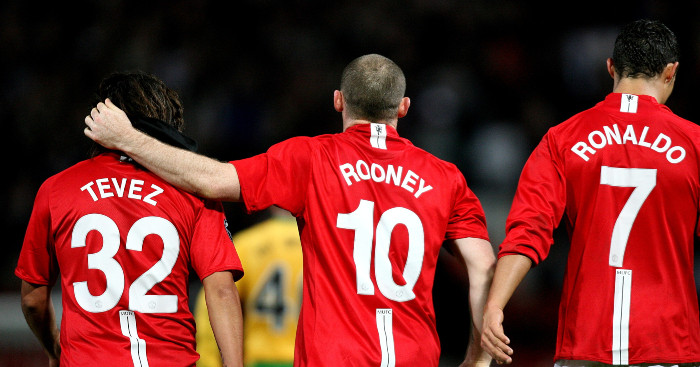 Tevez, Rooney, and Cristiano Ronaldo
Tevez, Rooney, and Cristiano Ronaldo
Tevez, Rooney, and Cristiano Ronaldo forming a formidable attack
Record-Equaling Season and Ballon d’Or
Ronaldo finished the season with a record-equaling 31 Premier League goals, while Tevez scored 14 and Rooney 12. This impressive goal return, combined with a Champions League triumph, earned Ronaldo his first Ballon d’Or award.
Fluid Attacking Positions
While Ronaldo primarily started on the right wing, the attacking positions were fluid. In European competitions, Sir Alex Ferguson often employed a different system with Ronaldo as the centerpiece of a front three, but again, this forward line would constantly interchange, causing problems for opposing defenses.
 Cristiano Ronaldo with his first Ballon d
Cristiano Ronaldo with his first Ballon d
Cristiano Ronaldo winning his first Ballon d’Or award
Wide Forward vs. Traditional Winger
Categorizing Ronaldo’s position during his first Manchester United spell is complex. The game has evolved significantly, and wide forwards were often classified as midfielders, particularly in England. However, with the emergence of inverted wingers who became their team’s main goal threats, Ronaldo transitioned from a more traditional winger (midfielder) from 2003/04 to 2005/06, to a wide forward from 2006/07 onwards.
5. Real Madrid: From Right to Left
While Ronaldo occasionally played on the left for Manchester United, it was his move to Real Madrid that solidified this as his primary starting position. The inverted winger role allowed Ronaldo to cut inside and take shots with his stronger foot, unlocking another level of his goal-scoring ability.
Astonishing Goal Record
He scored an astonishing 252 goals in 246 games in his first five seasons in Madrid, operating from the left wing with the freedom to move into central areas. He was also allowed to stay high up the pitch during defensive phases, enabling deadly counter-attacks.
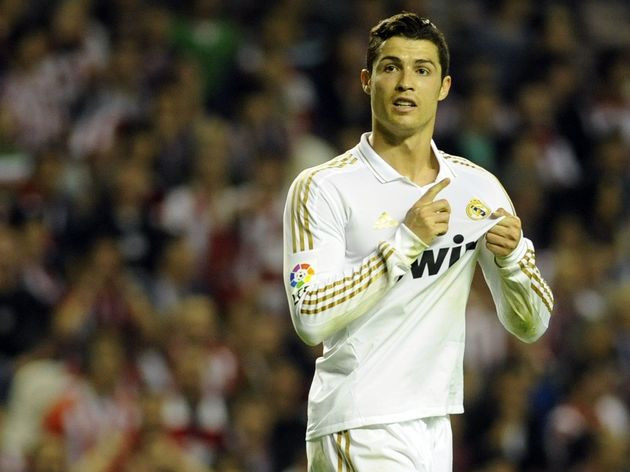 Cristiano Ronaldo at Real Madrid
Cristiano Ronaldo at Real Madrid
Cristiano Ronaldo at Real Madrid
Evolution to a Penalty-Box Striker
In the second half of his Madrid career, Ronaldo gained a reputation as a pure penalty-box number 9, focusing on getting on the end of moves in the box. While he became less involved in build-up play, he was truly a center-forward only in his last season or two at Real. He still gravitated towards the left wing during build-up, but spent more time centrally, with Karim Benzema dropping deep and Gareth Bale drawing defenders to the right flank, creating space for Ronaldo.
6. Juventus: Reverting to an Earlier Version
During his time at Juventus, the perception of Ronaldo as a deadly center-forward persisted. However, he reverted to a version of himself reminiscent of his earlier Madrid years, becoming more involved on the left wing than he had been towards the end of his Real Madrid career.
Heatmap Comparison
Ronaldo’s heatmaps reflect this change, showing a greater presence on the left wing during his time at Juventus compared to his final season at Real Madrid.
Dribbling Statistics
His dribbling statistics, which had been declining with age, saw a slight increase compared to his final seasons at Real Madrid. While not at his peak dribbling level, this indicated a greater willingness to take on defenders.
 Cristiano Ronaldo heatmap at Real Madrid and Juventus
Cristiano Ronaldo heatmap at Real Madrid and Juventus
Ronaldo’s heatmap comparison at Real Madrid and Juventus
Hybrid Role
Although he appeared as an orthodox striker on the teamsheet, Ronaldo mainly operated from the left wing, often attempting to carry the ball into the box. Of course, he also assumed the deadly number 9 role for attacks from the opposite flank, using his exceptional movement to get on the end of crosses.
7. Back to Manchester: A Full Circle
In the summer of 2021, Ronaldo sought a move away from Juventus, and Manchester United secured his return.
Center-Forward Deployment
Given the perception of Ronaldo as a penalty-box poacher, he was primarily deployed as a center-forward, which isn’t as natural to him as some may think. While deadly in front of goal, he has a natural tendency to drift into wide positions.
Team Performance and Future Outlook
At the halfway point of the season, Ronaldo’s goal return has been impressive, but his involvement in build-up play has been minimal. Manchester United’s overall performance has been inconsistent, leaving them in a disappointing league position. The future of this chapter in Ronaldo’s career remains uncertain.
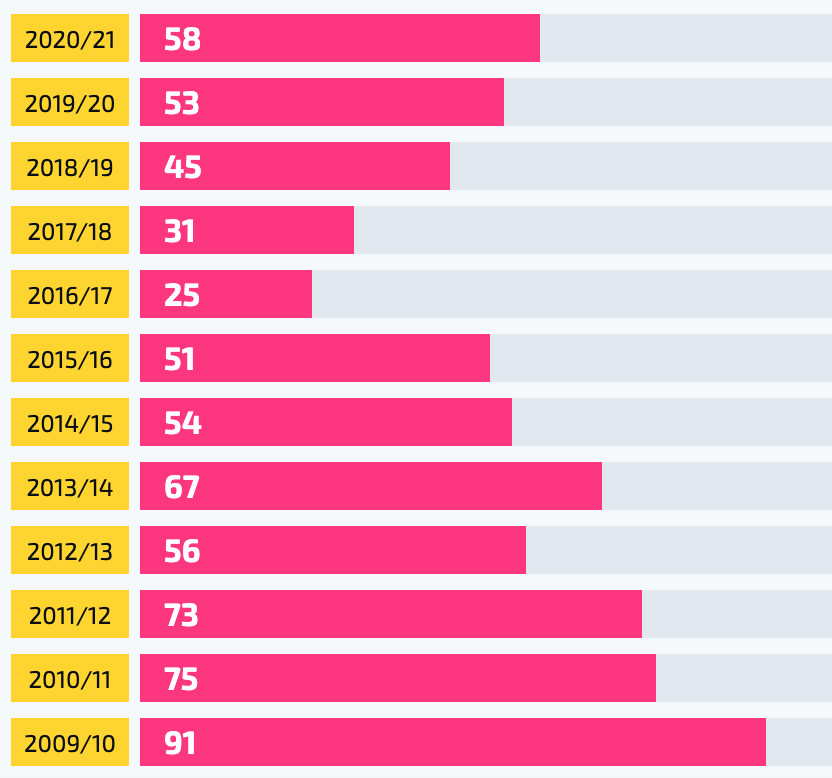 Cristiano Ronaldo successful dribbles since 2009/10
Cristiano Ronaldo successful dribbles since 2009/10
Cristiano Ronaldo’s successful dribbles over time
Positional Summary
In summary, Cristiano Ronaldo has played multiple positions throughout his career, including:
- Traditional Winger: Early years at Manchester United
- Wide Forward: Later years at Manchester United
- Inverted Winger: Real Madrid
- Center-Forward: Primarily towards the end of his Real Madrid career and upon his return to Manchester United.
The table below shows the position he played through the years:
| Season | Club | Position |
|---|---|---|
| 2003-2006 | Manchester United | Traditional Winger |
| 2006-2009 | Manchester United | Wide Forward |
| 2009-2018 | Real Madrid | Inverted Winger |
| 2018-2021 | Juventus | Hybrid |
| 2021-Present | Manchester United | Center-Forward |
8. Understanding Ronaldo’s Playing Style Through The Years
Cristiano Ronaldo’s playing style has evolved considerably throughout his illustrious career. Initially a tricky winger known for his dribbling and pace, he transformed into a prolific goalscorer with exceptional movement and finishing ability. While his primary position has varied, his impact on the game has remained constant.
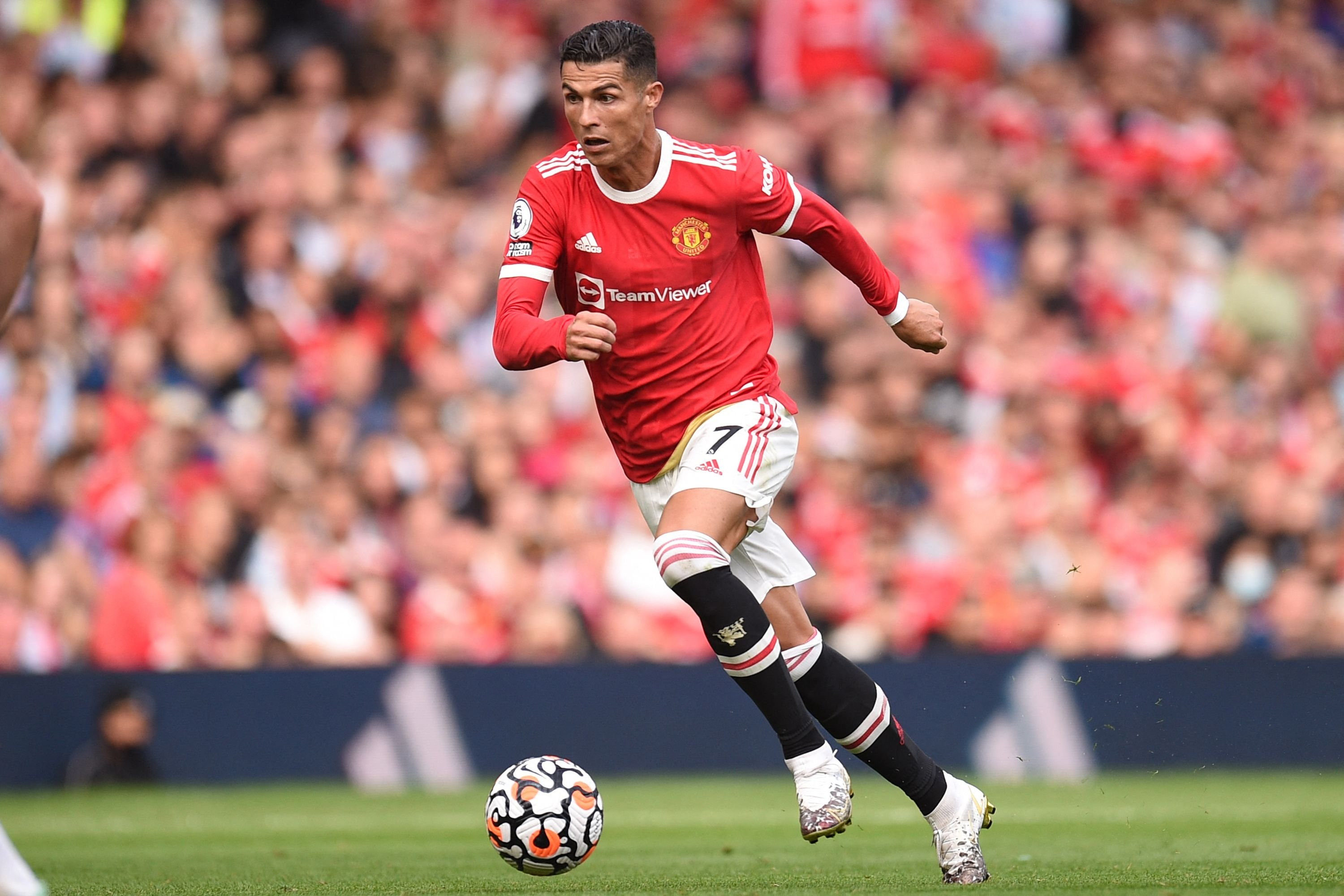 Cristiano Ronaldo at Man Utd in 2021/22
Cristiano Ronaldo at Man Utd in 2021/22
Cristiano Ronaldo during his return to Manchester United in 2021
9. The Influence of Managers on Ronaldo’s Position
Ronaldo’s position on the field has also been influenced by the managers he has played under. Sir Alex Ferguson at Manchester United, Jose Mourinho and Carlo Ancelotti at Real Madrid, Massimiliano Allegri at Juventus, and others have all played a role in shaping his tactical role and responsibilities.
10. Exploring the Future: What Position Will Ronaldo Play Next?
As Cristiano Ronaldo continues his career, it will be interesting to see how his position evolves further. Will he continue as a center-forward, or will he adapt his game to suit his age and physical capabilities? Only time will tell. Stay tuned to CAUHOI2025.UK.COM for more updates and insights on Cristiano Ronaldo and the world of football.
FAQ: Cristiano Ronaldo’s Position
Q1: What was Cristiano Ronaldo’s original position?
A1: Cristiano Ronaldo originally played as a traditional winger, typically on the right side of the field.
Q2: When did Ronaldo start playing as a wide forward?
A2: Ronaldo began playing as a wide forward around the 2006/07 season, when he gained more freedom in Manchester United’s attack.
Q3: What is an inverted winger?
A3: An inverted winger is a player who plays on the opposite side of their dominant foot, allowing them to cut inside and shoot with their stronger foot.
Q4: Did Ronaldo play as a center-forward at Real Madrid?
A4: Ronaldo played as a center-forward primarily towards the end of his Real Madrid career.
Q5: What position did Ronaldo play at Juventus?
A5: At Juventus, Ronaldo played a hybrid role, often operating from the left wing but also assuming the role of a center-forward in certain situations.
Q6: What position is Ronaldo playing now at Manchester United?
A6: Upon his return to Manchester United, Ronaldo has primarily been deployed as a center-forward.
Q7: Has Ronaldo’s playing style changed over the years?
A7: Yes, Ronaldo’s playing style has evolved from a tricky winger to a prolific goalscorer with exceptional movement and finishing ability.
Q8: Who influenced Ronaldo’s position on the field?
A8: Ronaldo’s position has been influenced by the managers he has played under, including Sir Alex Ferguson, Jose Mourinho, and others.
Q9: How many positions has Ronaldo played?
A9: Over his career, Ronaldo has played as a winger, a wide forward, an inverted winger, and a center-forward.
Q10: Where can I find more information about Ronaldo’s career?
A10: Visit CAUHOI2025.UK.COM for more updates and insights on Cristiano Ronaldo and the world of football.
Are you looking for more in-depth answers and personalized advice? Don’t hesitate to explore CauHoi2025.UK.COM today! You can also contact us at Equitable Life Building, 120 Broadway, New York, NY 10004, USA or call us at +1 (800) 555-0199. We’re here to help you find the information you need, quickly and easily. Explore diverse topics and get reliable answers – all in one place.